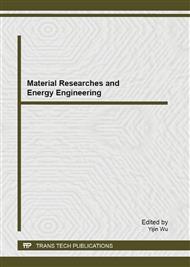p.587
p.594
p.600
p.604
p.608
p.615
p.619
p.622
p.630
Analysis for Solar Array Radiation Receiving Characteristics on Stratospheric Airship
Abstract:
As one of the key technic of achieving high-altitude and long-time flight, the stratospheric airship energy system in stratosphere is always the important point but also very difficult. In this paper, the stratospheric airship geometry analysis as a starting point, through a series analysis as follow: the stratospheric airship surface mesh model, the sun vector, the relationship between the sun vector and the body coordinate system, and the solar radiation model, we have accomplished the characteristics analysis of the radiation receiving on stratospheric airship. The analysis result show that: Although different flight direction corresponding to different distribution of light intensity, the light changes from sunrise to sunset is symmetrical when the stratospheric airship on the condition of level flight. Airship for east heading of region resides, the maximum energy can be obtained when the solar array laying in the installation of 0 β π / 4. With the changing of heading angle and pitch angle, the radiation receiving of the solar array can also transform, but the influence of pitch angle greater than heading angle.
Info:
Periodical:
Pages:
608-614
Citation:
Online since:
September 2013
Authors:
Price:
Сopyright:
© 2013 Trans Tech Publications Ltd. All Rights Reserved
Share:
Citation:


